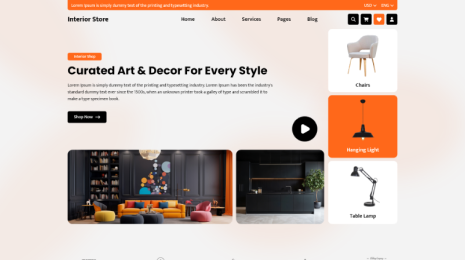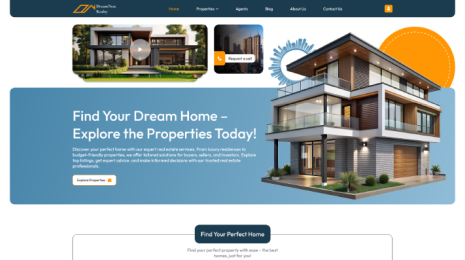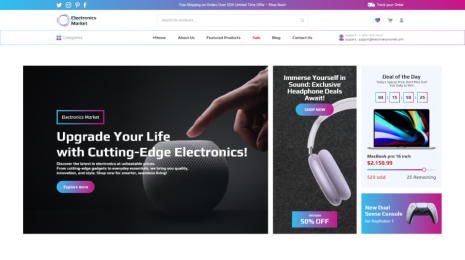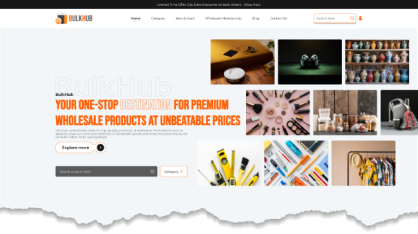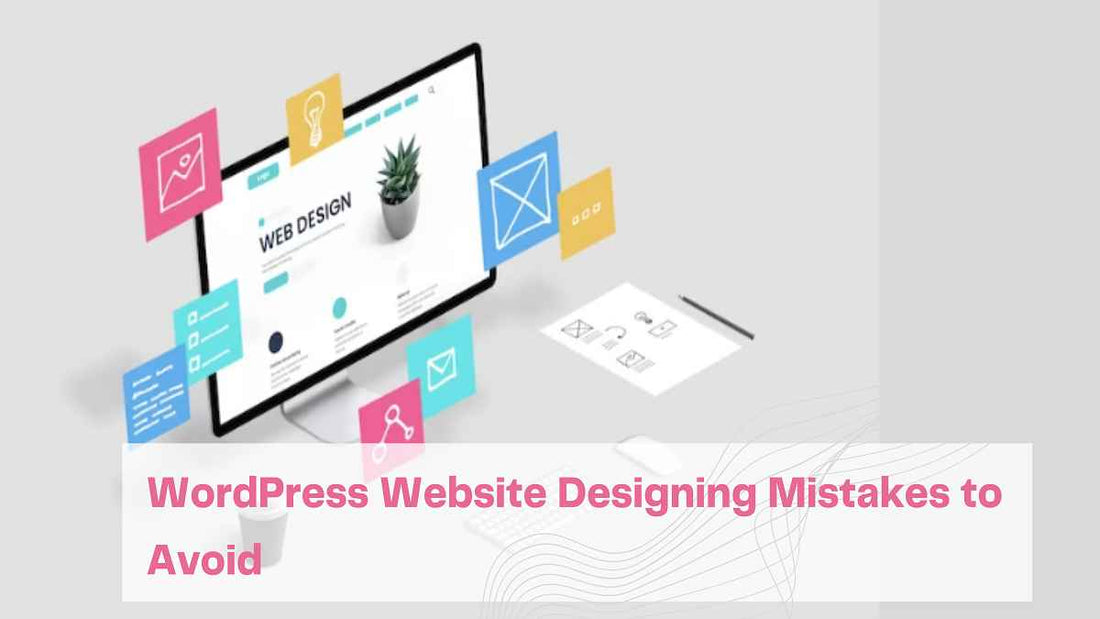
Designing your website with WordPress can be exciting as it avails you with a lot of customization tools. With the help of those tools, you can easily give a personalized and visually-appealing look to your website. But you can do that, only when you are aware of the common Website designing mistakes to avoid in WordPress.
Even a single mistake while designing your website can ruin all the efforts and hours of hard work you have put into designing. I’m sure you don’t want to ruin your design efforts by doing those mistakes. Well, worry not because we have got your back.
To make you aware and help you avoid those mistakes we have come up with this article. In this article, we are going to deep dive into the website designing mistakes to avoid in WordPress. By the end of this article, you will get to know the common designing mistakes most website owners do and the ways to tackle those mistakes.
So, stay tuned and read this article till the end.
Website Designing Mistakes to Avoid in WordPress
The common WordPress website design mistakes are mentioned below.
- Using a Poorly Coded Theme
- Using Heavy Page Builders
- Excessive Plugins Installation
- Keeping Some Pages with Default Content
- Not Optimizing Media
- Omitting XML Sitemap
- Wrong Call to Action (CTA)
- Hidden Navigation
Let’s take a look at all of these design mistakes in detail.
Using a Poorly Coded Theme
We all know, how helpful a theme is when it comes to designing your website. A WordPress themes allows you to give a professional and visually appealing look to your website in a matter of a few minutes. On top of that, you can also customize a theme to give it a personalized touch to match your brand's identity.
There are numerous designing benefits you can get from a WordPress theme, but only if it is a properly coded theme. Yes! You heard it right. All of the themes listed on the official WordPress directory are properly coded themes. Some of them are free and some are paid with extra features.
Some website owners install these paid themes for free from several third-party websites. Themes installed from these third-party websites are poorly coded and might contain a malicious element in their HTML code. You might think you are getting those paid themes for free but they are coming at a cost of security and performance of your website.
The poorly coded infrastructure of these themes makes it hard for your website to appear on the web properly causing rendering issues. Due to this, your website visitors have to wait for a longer time to access your website.
In addition, these poorly coded themes are an easy way for hackers to take control of your website and steal your site’s data. This can lead to a long-term and huge loss for your business. Hence, it is important to avoid using poorly coded themes.
To avoid getting a poorly-coded theme, always make sure to install themes from a trustworthy source such as the official WordPress directory. If you don’t have the budget to purchase a paid theme, you can still use a free theme. I know the features are limited in a free theme but it is better to use it than comprising your site’s security by using a poorly coded theme.
Using Heavy Page Builders
WordPress page builders are great tools to design your overall website, aren’t they? Yes! No doubt they are helpful when it comes to designing a website. But only when you choose the right page builder and know how to get the best out of it.
Using a heavy page builder can bring up various issues instead of benefits to the table for your website. The heavy page builders come up with a lot of features and functionalities that can slow down your site’s loading speed.
In addition, heavy page builders fail to create clean and effective code in most cases. Instead, it creates an improper code which further causes rendering issues to your website. As a result, your website fails to load properly on the web.
All of these issues caused due to heavy page builders ultimately spoil the user experience and search engine rankings of your website. Hence, to avoid the consequences of using a heavy page builder, you can stick to the default WordPress editor. It will not only create an effective code but also help improve the overall look and performance of your website.
Excessive Plugins Installation
As website owners, we understand the importance of plugins. They are great tools that allow us to add various useful functionalities to our websites. But what if I say, installing plugins is one of the worst website design mistakes?
Yes! You heard it right. Installing unnecessary plugins to your website can negatively impact the security and performance of your website. This is because plugins are packed with heavy code which can put a lot of load on your site’s server. As a result, your site’s performance and loading speed tends to decrease.
In addition, the plugins installed from third-party websites may contain some suspicious code or malware that can damage your website. Such plugins can also be used as a pathway by hackers to enter your website’s system and hack it.
I’m not saying to completely cut off your plugin usage but just be mindful while installing the plugins. Firstly, priorities the plugins providing essential features such as security, performance, customization, SEO etc.
Afterwards, you can go on installing the plugins that are important depending on your needs. Just make sure to set a limit and don’t install beyond that number.
The most important thing is to install the plugin from a legit and trustworthy source. Don’t go for third-party websites instead stick to trusted sources such as the official WordPress directory to install plugins.
If you are willing to cut off excessive plugin usage but at the same time don’t want to miss out on important features and functionality, then multifunctional plugins can be a great fit for you. A multifunctional plugin is a single plugin packed with multiple features and functionalities.
Jetpack is one of the most popular multifunctional plugins listed in the WordPress directory. It is packed with useful features such as WordPress security, customization, SEO etc.
Keeping Some Pages with Default Content
The fourth designing mistake is not removing the default content pages embedded by WordPress itself. It’s a common mistake done by website owners who are just starting their website designing journey.
The default content pages are provided by WordPress to help you get an idea about the primary outlook and layout of the WordPress block editor. The default content can be anything, it may be media files, text or animations etc.
Most website owners get ahead with designing their websites without removing these default content pages. Well, they are not going to harm your website in any way but those default content pages don’t resonate with your other content.
If your website visitors encounter those default content pages while scrolling through your website, it can spoil their content consumption experience. It will put a bad impression on their mind about your website and they might leave your website without scrolling further.
Moreover, your website’s engagement rate and SEO rankings will more likely to drop down. Therefore, it is essential to remove the default content pages from your WordPress website. To do that, go to the default content pages and remove them with the default WordPress editor.
It will not take much of your time and by doing so, you will be able to provide a seamless content consumption experience to your website visitors.
Not Optimizing Media
Media files such as images or videos are no doubt a great way to hook your audience, improve the outlook of your content and increase the engagement rate of your website. But what if I say that media files are spoiling the outlook of your content and increasing the bounce rate instead of the engagement rate?
Non-optimized media files do not possess the specific layout and size needed to stand out in your content on every device. In addition, your site’s server has to put in extra effort to load these non-optimized media files. As a result, your site’s user experience and overall performance start to decline.
To avoid the issues caused by non-optimized media, it is important to optimize and compress the media files before uploading them to your WordPress website. Compressing the images will help to reduce the load on your site’s server and improve your site’s loading speed.
You can compress the images manually on your own or install an image compression plugin. WP compress and Imagify are some of the image compression plugins you can use to reduce the size of images uploaded on your website.
When it comes to videos, I will suggest embedding videos on your website instead of uploading them directly. In this way, you will save a lot of server space and at the same time provide video content to your website visitors without impacting the performance of your website.
Omitting XML Sitemap
As the name suggests, a sitemap is a map for your WordPress website. It is used by web crawlers and Google bots to locate your website, index your website and show it in Google search results.
Without a sitemap, the Google bots will not be able to locate your website and it will not appear in the Google search results. Hence, omitting an XML sitemap is one of the worst website designing mistakes. If you haven’t generated and submitted the sitemap in the Google search console yet then make sure you do it as soon as possible.
The good thing is you don’t need to pay anything or give a lot of time to create and submit a sitemap. Firstly, you need to create a sitemap for your website with the help of a sitemap creator tool.
To do that, go to Google and type the search query ‘’sitemap creator tool”. Go with one of the links from the search results. Now enter your site’s URL and click on generate sitemap. Once it has been generated download it, copy its URL and Go to the Google search console.
Sign up to the Google search console with your existing Google account and enter your site’s URL. It will take a few minutes to verify your ownership of the website. Once the verification has been done, click on the dashboard and then go to the sitemaps section.
In the sitemaps section, you have to submit your sitemap’s URL and let the Google search console verify it. Once the sitemap has been submitted and verified successfully, your website’s pages will get indexed and start appearing in the Google search results.
Wrong Call to Action (CTA)
CTA is the gateway of your website and business. It asks the users to perform the activities, to move further on the website, such as Click here! Or Get the attractive deal! Or something else. CTA is an obvious command for visitors, which the website owners ask to do. But before performing the action, visitor should know what he is going to get after taking the action. Make sure your CTA is concise and give exact information to the customers.
Hidden Navigation
Navigation should be always clear and visible. Otherwise visitors will never spend time on the website. Visitors will not waste their time in searching for the navigation menu. Hiding the navigation menu is a common mistake in website design.
Conclusion
Website designing allows you to enhance the overall look of your website and give it a personalised touch. But doing it with caution is important because a single design mistake can ruin all your hard work and degrade the performance of your website.
Therefore, make sure to keep an eye on all of the website's designing mistakes to avoid in WordPress we discussed in this article. Always use a properly coded theme, optimize your media files, limit your plugin usage and also make sure to generate and submit the sitemap in the Google search console.
So, what are you waiting for buddy? Go and create an eye-appealing and impactful design for your WordPress website.


